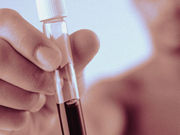Statistically significant 2.2 percent increase in mean hematocrit unlikely to be clinically relevant
MONDAY, Nov. 21, 2016 (HealthDay News) — Men treated with implantable testosterone pellets have a statistically significant increase in mean hematocrit, but it is unlikely to be clinically relevant, according to research published in the December issue of The Journal of Urology.
Russell P. Hayden, M.D., from Massachusetts General Hospital in Boston, and colleagues examined the incidence and risk factors for development of erythrocytosis in a multi-institutional retrospective database analysis. Data were reviewed for 97 adult, hypogonadal males (average age, 52 years) treated with testosterone pellets between 2009 to 2013.
The researchers found that the mean hematocrit was 43.9 and 46.1 percent before and after pellet implantation, respectively, corresponding to a 2.2 percent increase (P < 0.001). Testosterone increased by 145.3 ng/dL from an initial mean of 278.9 ng/dL (P < 0.001). There was an inverse correlation between pretreatment hematocrit and the expected change in hematocrit. There was no correlation between pretreatment comorbidity status and a significant increase in posttreatment hematocrit.
“Although the data demonstrate a statistically significant increase in hematocrit, an increment of 2.2 percent is unlikely to translate into clinical relevance,” the authors write. “Thus, for this cohort of patients, implantable testosterone pellets appear safe in terms of the risk of polycythemia.”
Full Text
Copyright © 2016 HealthDay. All rights reserved.








